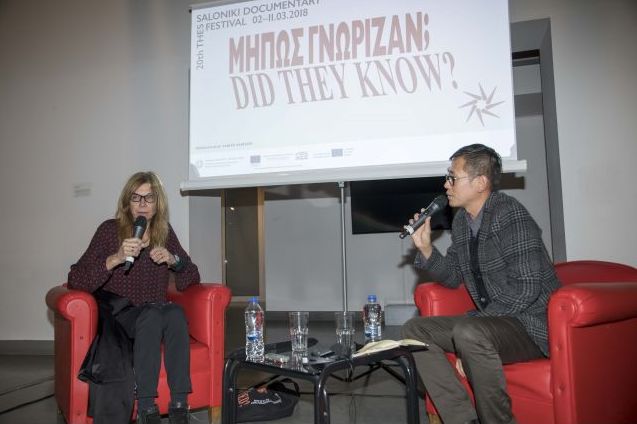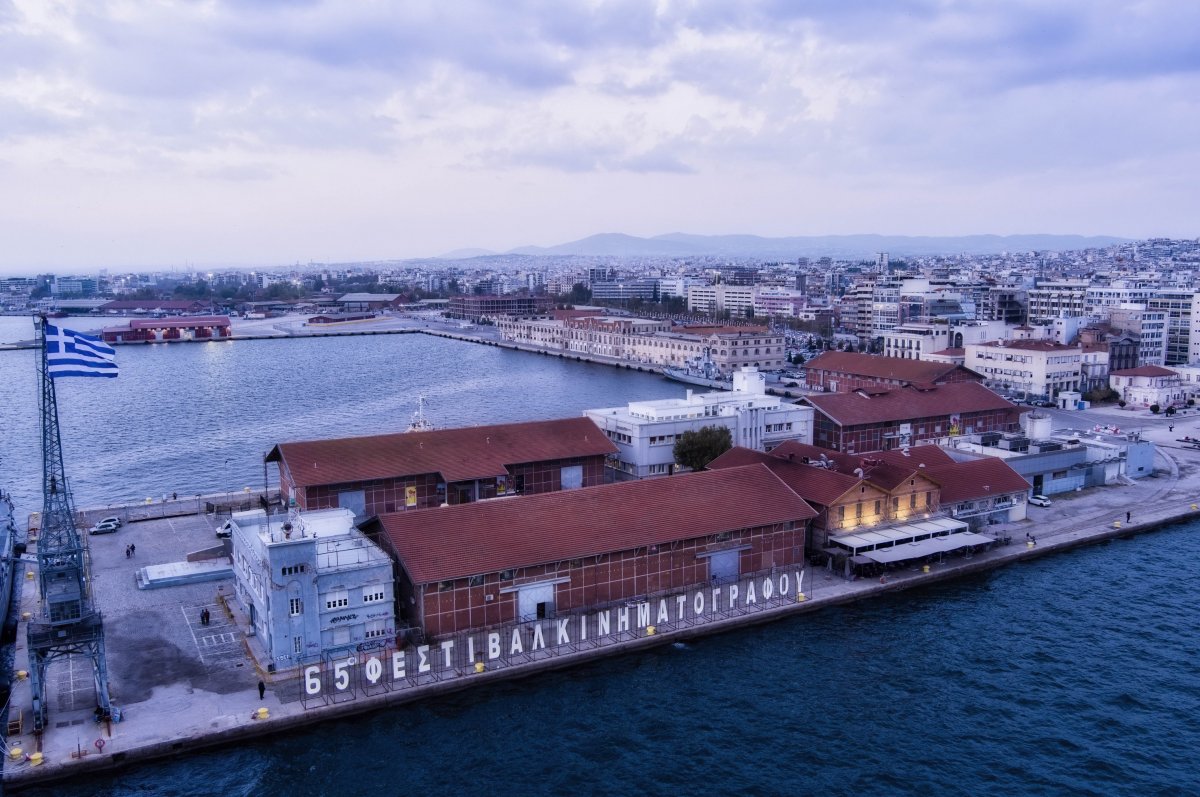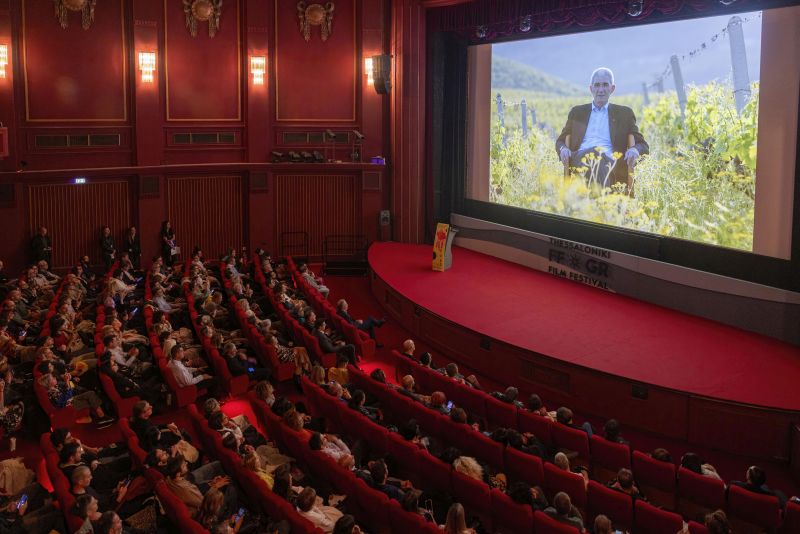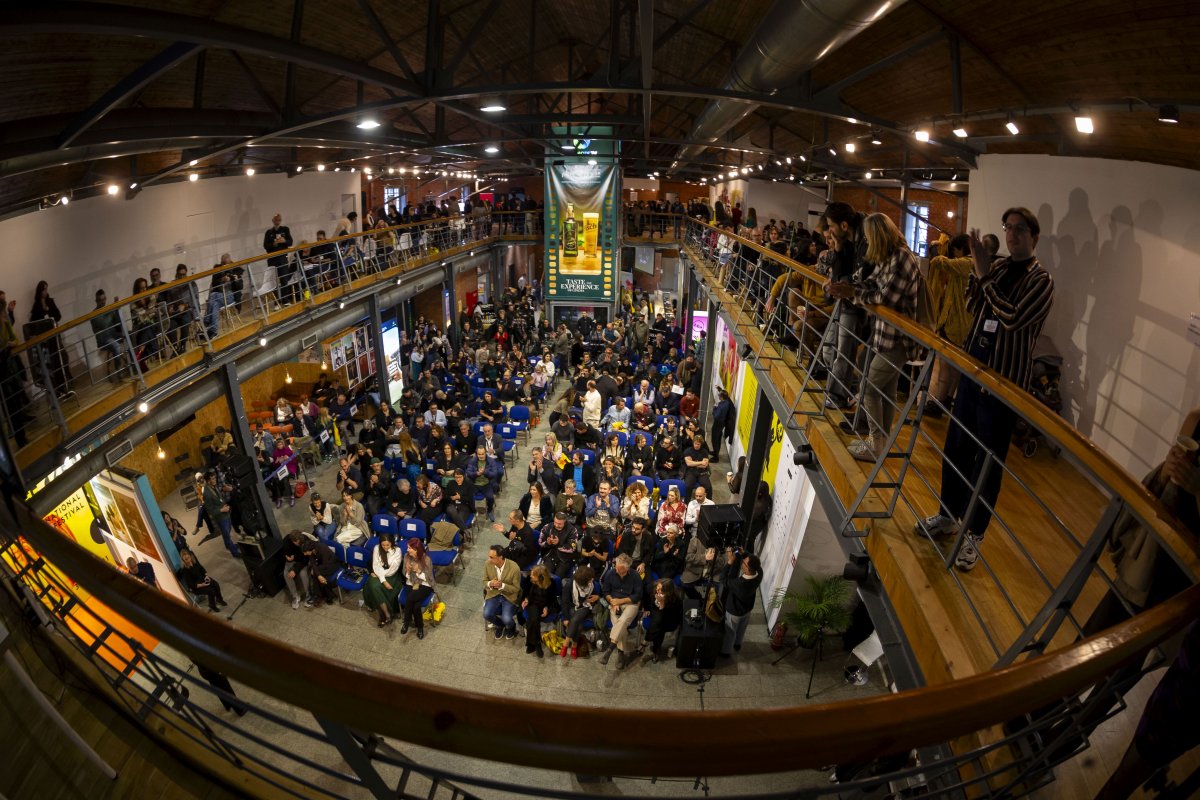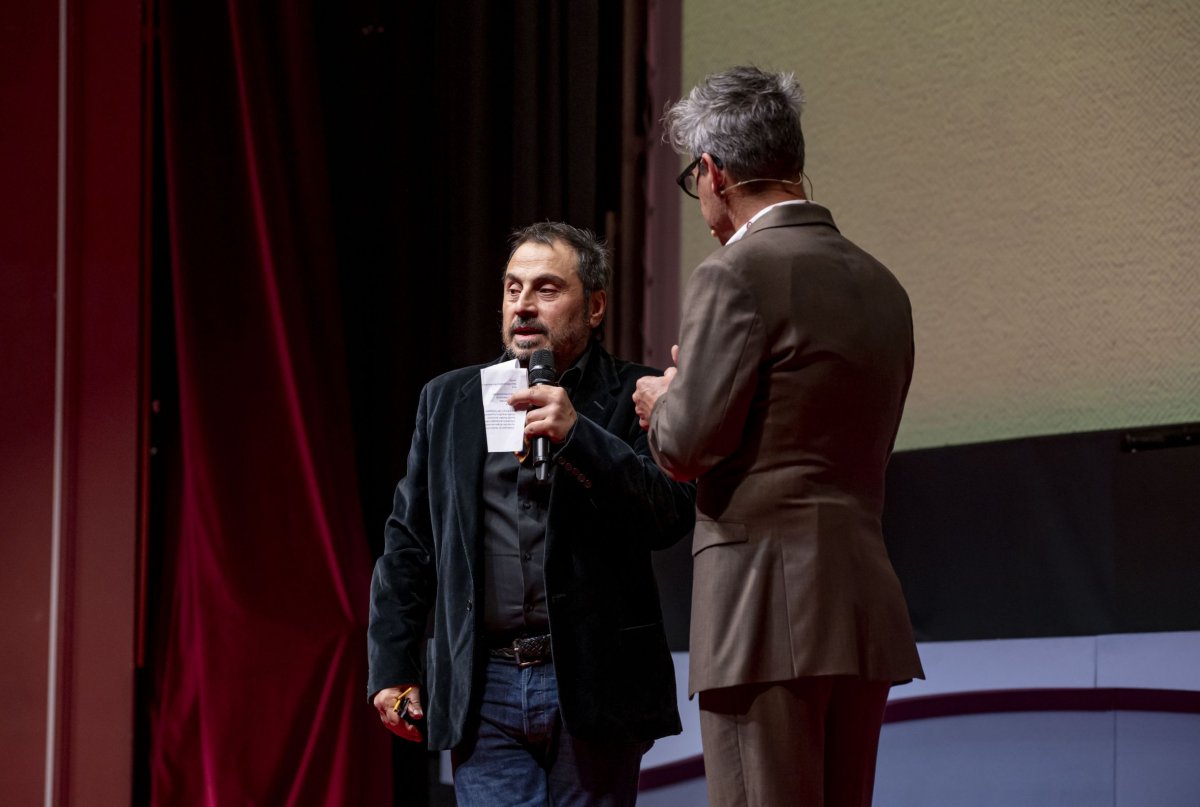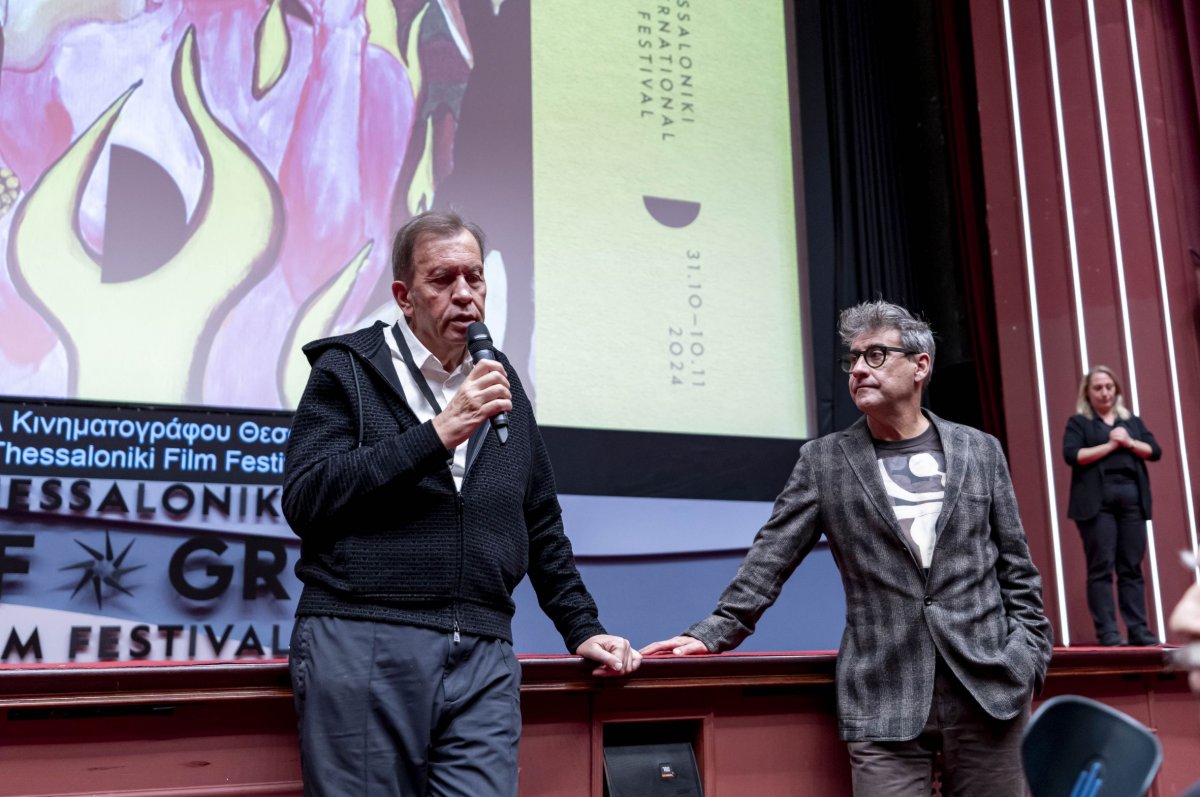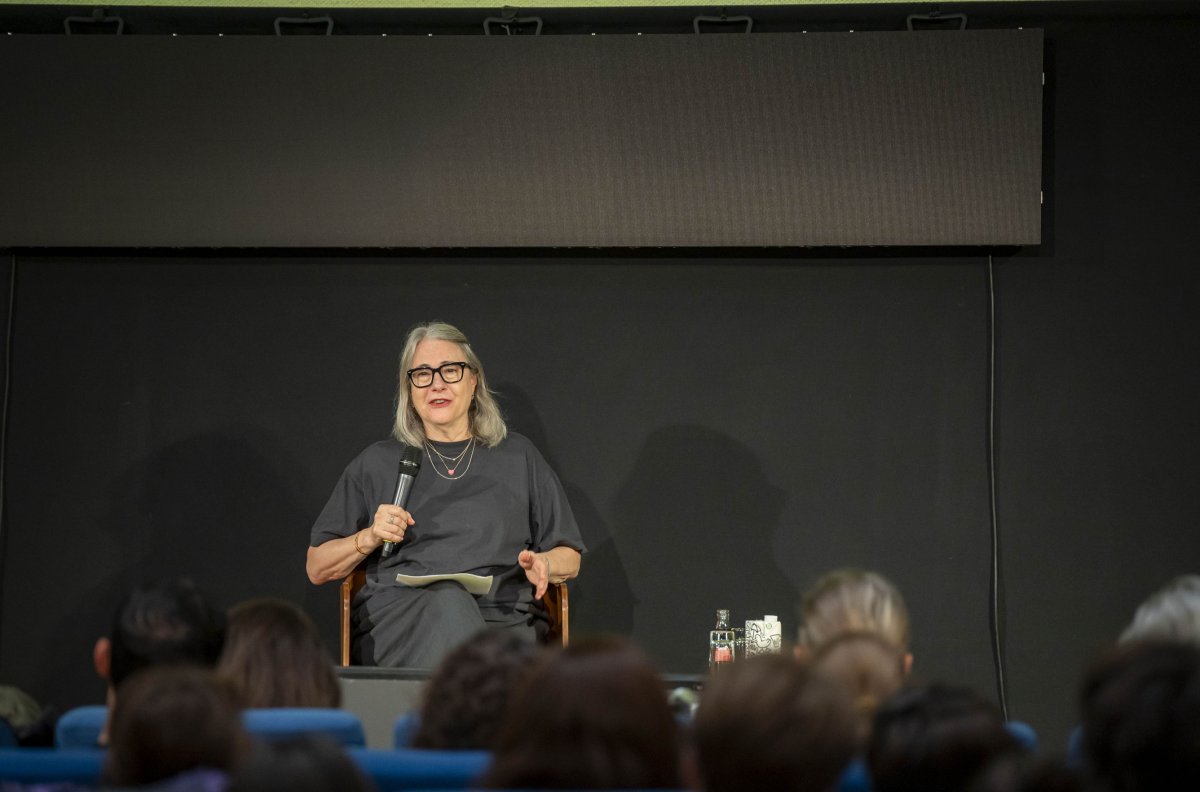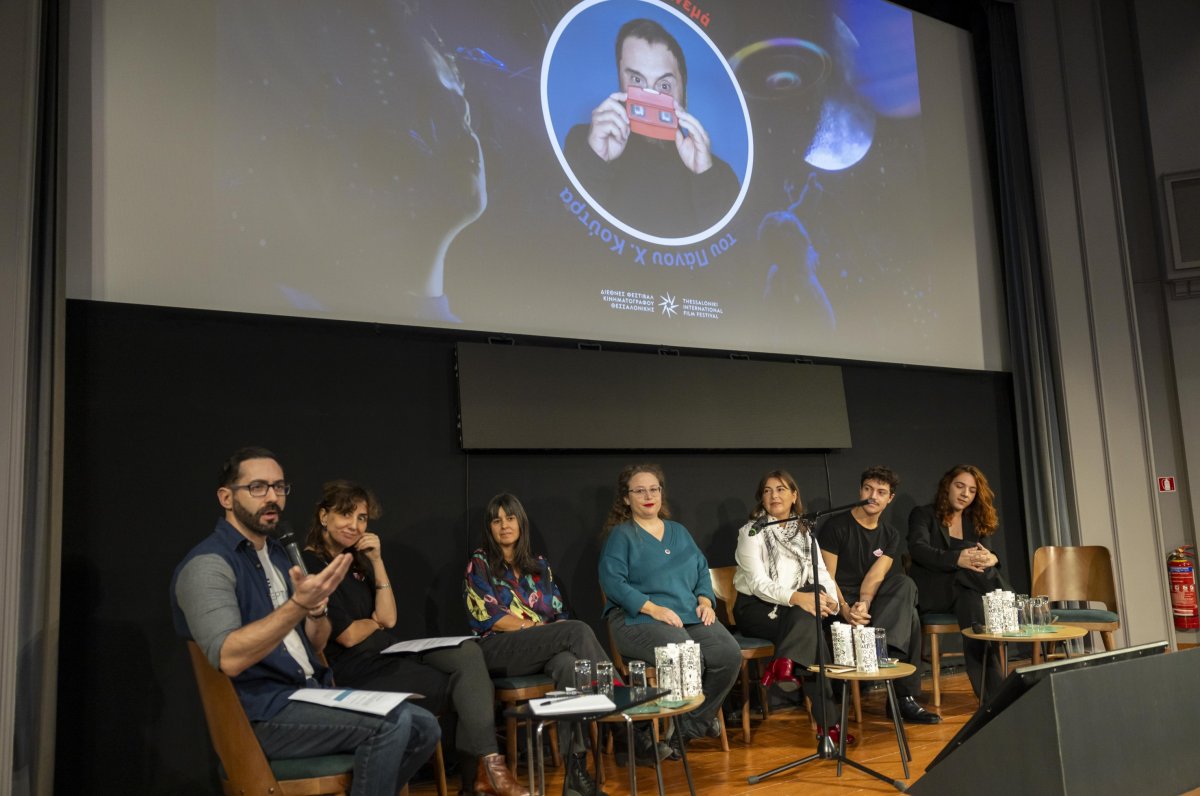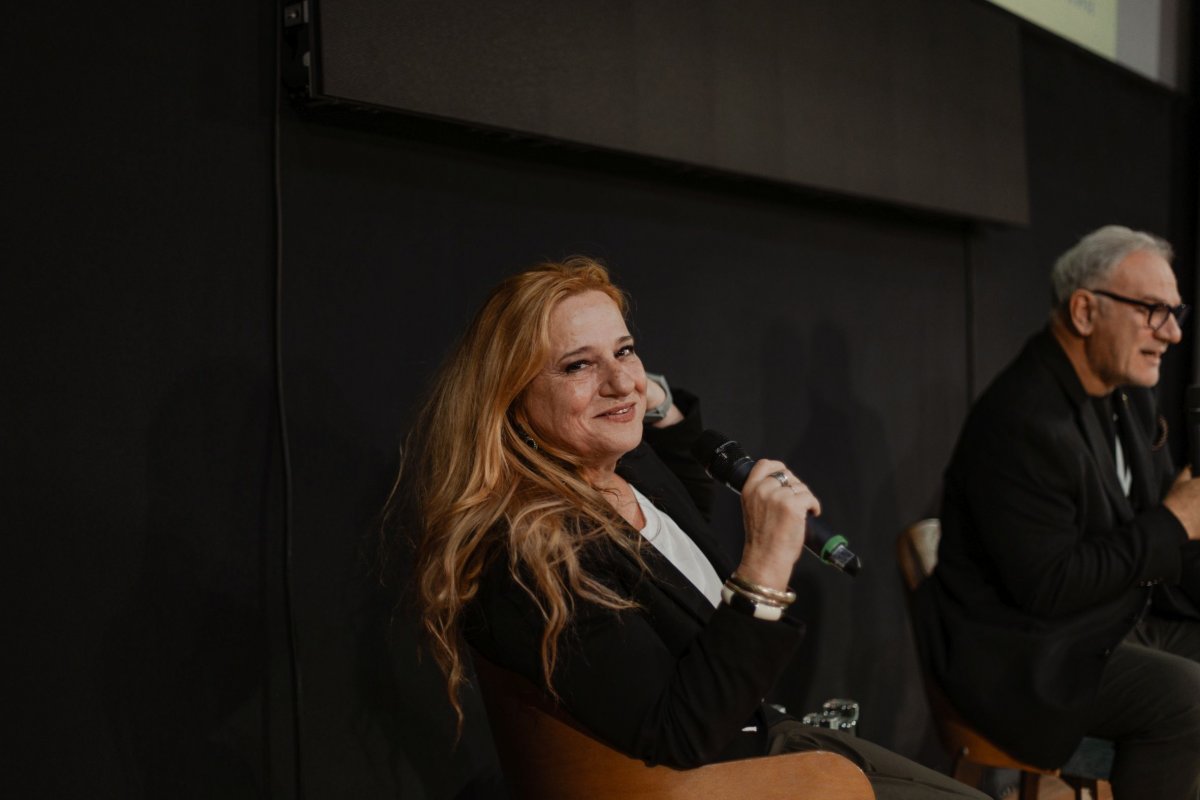A “window” with a view to the world of the fiery artist Jean-Michel Basquiat and the New York art scene in the late 1970s and the early 1980s was opened by the “high priestess” of independent cinema Sara Driver, as part of the open discussion “De(re)constructing Legends” that took place on Saturday 3 March 2018 at the Contemporary Art Center of Thessaloniki, as part of the 20th anniversary edition of the Thessaloniki Documentary Festival.
Sara Driver came to Thessaloniki on occasion of the carte blanche given to her by the TDF to select her favorite films, as well as for the screening of her latest film Boom for Real: The Late Teenage Years of Jean-Michel Basquiat featuring the subversive American artist. The open discussion took place on occasion of this screening. Driver talked with Dennis Lim, journalist and Program Director at the Film Society of the Lincoln Center in New York.
Opening the event, the Director of the Thessaloniki International Film Festival Orestis Andreadakis thanked the Director of the State Museum of Contemporary Art of Thessaloniki Maria Tsantsanoglou and the Director of the Contemporary Art Center Syrago Tsiara for their cooperation and introduced the guests, Sara Driver and Dennis Lim.
The prevailing feature in Driver’s documentary is the natural talent of the painter Jean-Michel Basquiat, who managed to leave great work behind even though he died at the age of just 27. On occasion of a teaser that was screened at the beginning, Driver revealed that Basquiat’s girlfriend, Alexis Adler, who also attended the discussion, was the reason for making this film. “Jean-Michel had lived at Alexis’ house for a few months in 1979 and 1980. Recently, while searching her archive, Alexis found some works of his -both paintings and texts- among which a notebook, a box full of her dresses that he had painted, as well as pictures of his that she had taken. When I saw all this, I thought: “Oh my God, this is a window to how Jean-Michel started as an artist! This helped me decide to make the film. We all know a story about Basquiat, his artistic course, the acknowledgment, the fame, and eventually his tragic death. I wanted to tell another story, the one where he encounters himself as an artist. This happens at the particular time described in the film, a little while before he becomes famous”.
This is the time Alexis Adler also referred to when came her turn to speak. “Jean-Michel had lived in various places. This house was the first one where we lived together, with him having his own key. This is where he found a safe place where he could paint anywhere, on the walls, the floors, the bathroom door, my clothes”, she said.
On his part, Dennis Lim commented on the equilibrium achieved between the references to Basquiat’s life and work and the depiction of NYC art scene at the time. “It is true than seeing the material I thought that it’s not only a window to Jean-Michel’s art, but also to NYC of that period”, Sara Driver agreed. And added: “New York was a city where no one wanted to live in at the time. We had an artistic community, we were close, partly because of the danger. The city looked like a playground without rules, where even police was afraid. Besides, there were drugs. In early 1980s we started to lose friends due to drugs, which until then were considered guilt-free among artists. That artistic community was small, we all knew each other. I remember Jean-Michel very well, I was meeting him all the time in the streets, he was always doing things with his hair, his clothes, he was special. I remember him being there when we were shooting the film Permanent Vacation with Jim Jarmusch. He often slept on the floor and we had to wake him up to continue shooting”. Driver added that “Every form of art -painting, literature, photography, cinema, performance, music, dance, was impregnating the other. We all tried to be pioneers, we all tried to become poets, and had a great sense of community and solidarity”.
Asked by Dennis Lim whether she tried to challenge some of the prevailing ideas as to this talented artist’s work and life, Driver made clear that “Many people considered him a graffiti artist. Jean-Michel Basquiat was not. He was a poet. He was writing poetry on the walls. He wanted to move people through words, send a message out there. He was walking around Manhattan and writing on walls very close to galleries, where artists and people of art in general used to live and work”.
Commenting on Lim’s remark that we never hear Jean-Michel Basquiat talk in the film, and only watch his work and pictures, Driver noted: “I wanted to depict him as some kind of... ghost”. And added: “Clearly there was not any kind of audio document and Jean-Michel was not the focus of attention at the time. Still, I wanted to make a portrait of him with absolute respect. This was my goal all along”.
Consequently, Dennis Lim referred to the carte blanche given to Sara Driver by the 20th TDF to select her 12 favorite films: Eleven documentaries and a fiction film, Idiocracy, by Mike Judge. It is the story of a man who agrees to take part in a US Army experiment only to wake up after 500 years and find out that he is the cleverer man on Earth -the film is in fact a satire on human stupidity. Lim confessed he was impressed by the scope and boldness of this choice and said to Sara Driver: “Your intention to see Idiocracy as a documentary is interesting. Would you like to talk to us about this?” The director noted: “This film was made in 2006 as fiction and today is a documentary. This, besides being prophetic, is also scary”. She also mentioned another film she selected for screening in Thessaloniki, Native Land, the first social documentary ever made in the USA in 1942, which is about the rise of fascism, with “amazing photography and a message which is today more timely than ever”.
Concluding, Sara Driver sent a message to young artists, inviting them to “leave aside their cellphones and the social media and get out, get to know each other, form communities, boost relations, make their own art exhibitions and art festivals to present their work. Only this way there can be hope”.


